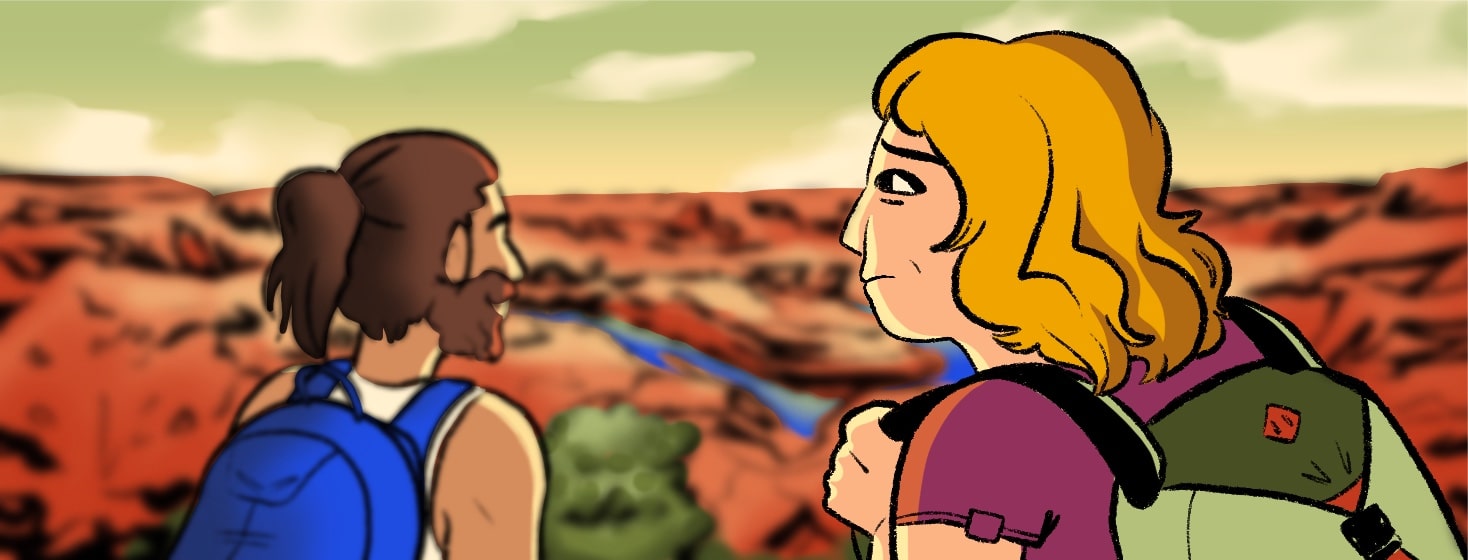What Having 20/20 Vision Means to Me
If you asked me when I realized it was time to take chronic dry eye seriously, it was at Dead Horse Point State Park in Utah. I went there on a beautiful spring day and hiked around the entire rim that overlooks spectacular canyons as far as the eye can see.
Except my gritty, irritated eyes couldn’t see, at least not like they should. For many years I’d had the experience of my eyes just not feeling fully awake in the morning. I just accepted it as “my morning eyes.” On hiking days I’d just hope it would be a better day and they’d improve by the time I really had something to see.
It was time I did something about my eyes
But this day they didn’t. I was looking out at some of the most spectacular scenery in the country and only getting an impressionist painting. “Why is my vision still so blurry?” I thought, sitting in a quiet spot all to myself near the canyon edge. It made me feel robbed of some of the joy I experience being in nature. This wasn’t something I could just accept.
I left with a realization: something must be seriously wrong with my eyes, and it’s time I did something about it.
You may be asking yourself, can dry eye disease really affect vision? Unfortunately the answer is yes. The tear film that covers the surface of your eyes is made up of 3 different layers, an oil layer from tiny glands in your eyelids, a water layer from tear glands above the eye, and a mucous layer. All 3 of these are important for good vision and healthy eyes, and if any isn’t working properly, things can start to look blurry.
Feeling worried
I decided to start with my annual eye exam and see if my vision issues were just a change in astigmatism. My optometrist flipped through lenses and asked me which one was better, “one, or two,” then repeated each, but I still couldn’t choose with certainty. It felt like he was going around in circles trying to find the right prescription for me. The best I could get to was 20/30 in my right eye.
Then he looked at my corneas. They had much more signs of dryness than just the year before. I’ve struggled for years in those exams, but this was the first time I couldn’t get to 20/20. It left me feeling discouraged and worried.
When I talked to my mother about my frustrating appointment she said, “why do you need to see 20/20?” As a senior she’s accepted imperfect vision to a degree. But the question left me speechless. How can I explain what it means to me to be able to see clearly?
Steps I'm taking to help my vision
Since my first pair of glasses so many years ago, there has always been a feeling of joy seeing everything return to sharp clarity. Whether it’s reading words on a page, notes on a sheet of music, or a distant mountain while out on a hike, my vision couldn’t be more important to me. Then I started to wonder, what if it gets worse? What if it gets to the point where I can’t even pass a vision test at the DMV?
I know now, after visiting several dry eye specialists, that my problem is somewhat complex: my tear film is deficient in both tears and oils from meibomian glands that just aren’t working right. How it got this bad, I’m still trying to figure out. But it’s gotten gradually better now that I’ve started following a good regimen of home care. I’m also reducing some medications that are known to worsen dry eyes, and that’s brought some improvement.
It’s still hit or miss whether I’ll have a good vision day where I can see clearly in the distance, but I’m having more good days than bad now. I have hope that someday I’ll be back at that canyon, looking out as far as the eye can see and not missing anything.

Join the conversation